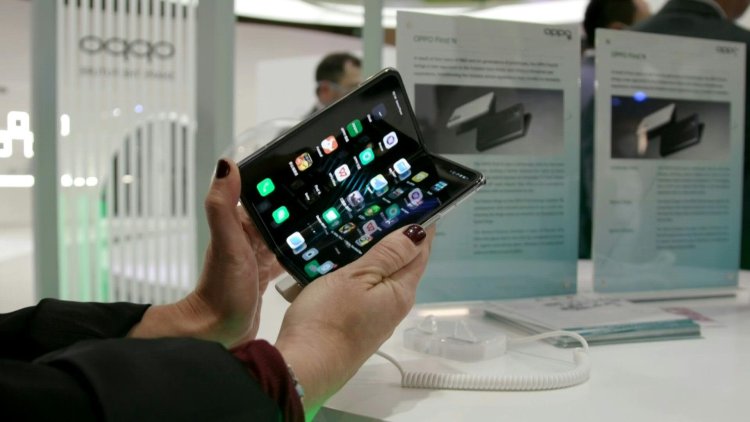Foldable future: Smartphones return to design classic

The "snap!" of a shutting phone is the nostalgic sound resonating from the giant stands of Samsung, Oppo and Huawei at the Mobile World Congress in Barcelona this week.
Star of the early 2000s, the flip-phone was making a comeback, with the big names of the industry hoping the high-tech new version -- the foldable smartphone -- was on the verge of going mainstream.
As production costs start to fall, analysts expect a tenfold increase in sales by 2026.
Samsung has been the pioneer in the sector, presenting the first foldable smartphone at the Barcelona conference three years ago.
The South Korean firm accounted for 87 percent of foldable phone sales last year according to analysts DSCC.
It vows that its latest models -- the "Galaxy Fold" and "Galaxy Z Flip" -- will give users the sort of experience normally reserved for tablets and laptops.
"We are working with players like Disney+ and YouTube to best integrate their applications into this screen size and make maximum use of all the possibilities of the product," said Francois Hernandez of Samsung France.
But competition is rising, with companies like China's Oppo muscling in.
Its "Find N", currently available only in Asia, has seen "really hot" sales in China, according to the company's head of products Arne Herkelmann.
The foldable phone "is ready for the mass market," she said.
"We see that it is becoming more and more mature as a technology and also reaching more approachable prices, so definitely in the future, you will see more foldable devices."
It has not just been the technical challenge of creating a bendable screen that has held back the market.
It has also been hard to disrupt the fundamental image -- seemingly set in stone with the first iPhone in 2007 -- of a smartphone as a large black rectangle with a single touch screen.
They remain a niche segment with a market share of just 0.62 percent in 2021, according to Ritesh Bendre, analyst at Counterpoint Research.
But with Huawei (and its P50 Pocket), Xiaomi, Motorola, and even Google working on their own models, that share is expected to reach 3.5 percent by 2025, he said.















